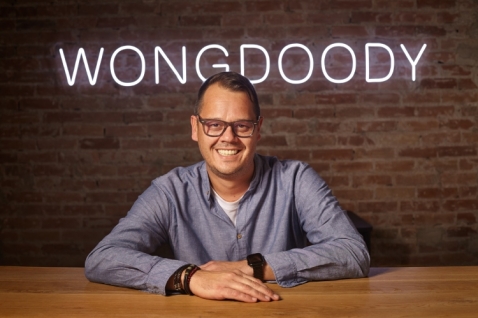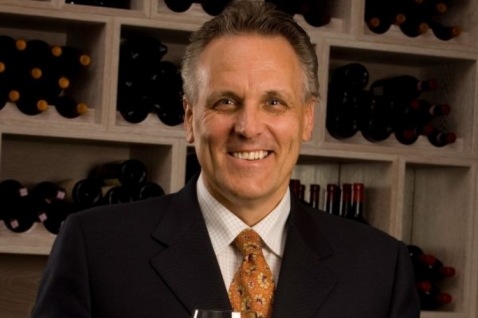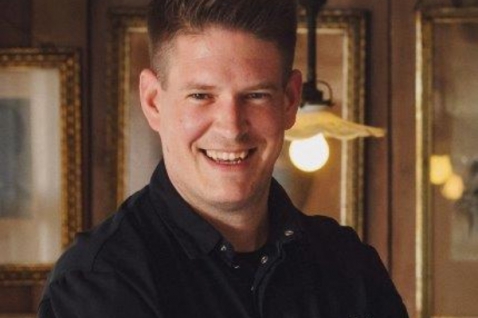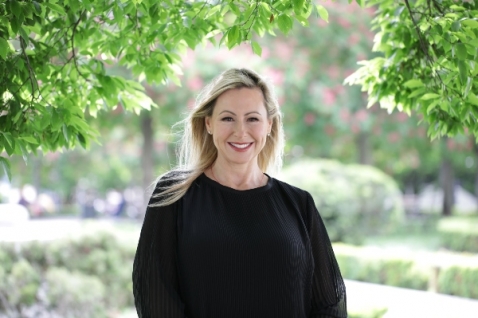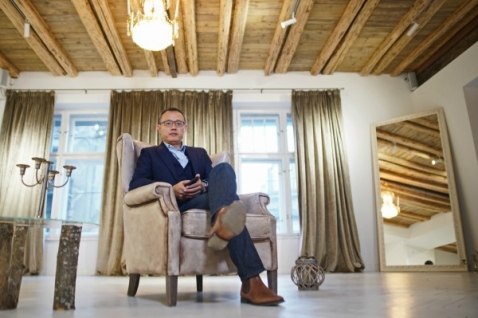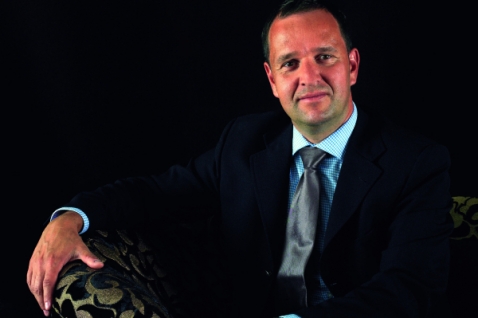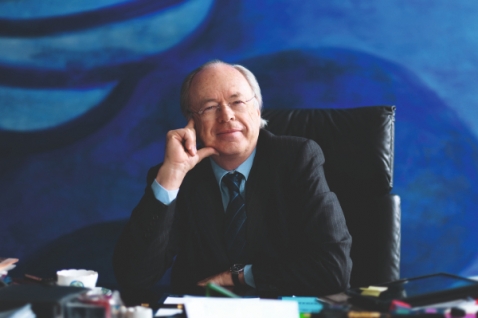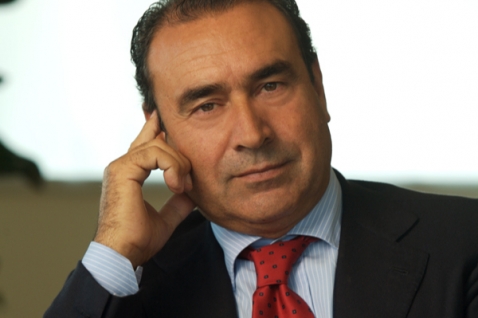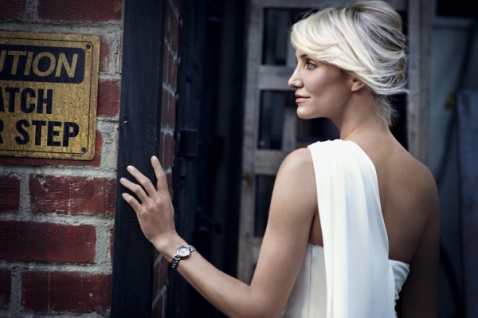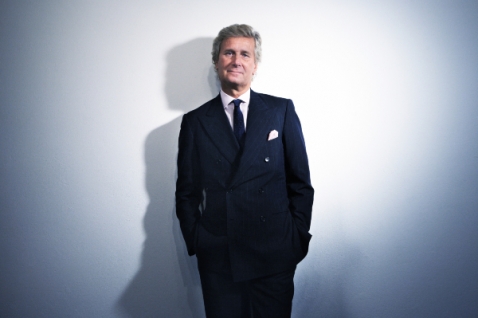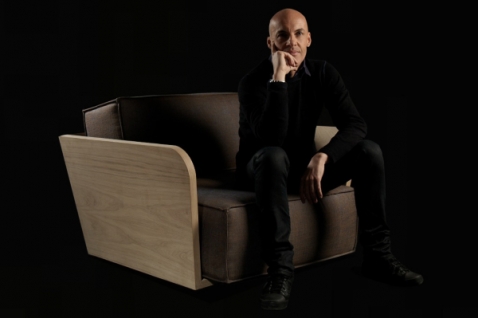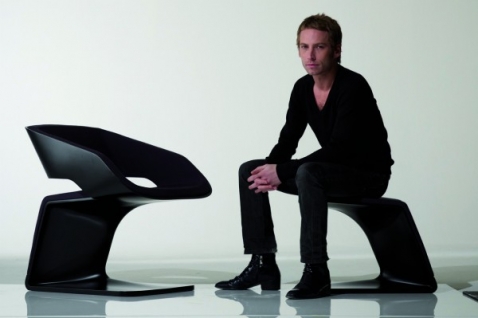
Zaha Hadid is probably the most famous female architect in the world, able to shape not only individual buildings, but entire urban landscapes, spaces and places. Her recent projects are impressive witnesses of the magnificence of one of the greatest architectural talents of our time...
As part of the “Design Miami / Basel”, in Basel this summer, a major project entitled “Zaha Hadid and Suprematism” was presented, which shows her continual artistic development under the influence of the Russian avant-garde. Hadid has transformed “Galerie Gmurzynska” into a black and white, fluid, dynamic space and in the unusual way presented the Russian constructivist works and their impact on its overall creative output. The exhibition includes work of legendary Russian artists: Ilya Chashnik, El Lissitzky, Kasimir Malevich, Alexander Rodchenko and Nikolai Suetin. An interesting setting of the exhibition, created by modern and classic - a cult constructivist terms, stress the incredible contemporary contributions Zaha Hadid has consistently made to the culture of our time, as well as the enduring influence and importance of the Russian Avant Garde. It was an honour to talk with Zaha Hadid on her last exhibition, inspiration, roots and future plans.
1. Wherefrom your fascination with the Russian avant-garde comes?
I was and still am fascinated. When I was a student in ‘70, people have really had a prejudice. At that time, it seemed that the rise of modern art was over. However, the influence of Russian constructivist was more than positive. When I visited Russia, I became a witness of all major projects and felt the extraordinary energy. I was thrilled with the program, not just its architectural, constructive aspects. I did not know whether the society could survive on such ideas, but I believed that it was possible to apply these same ideas in architecture. My ambition was to create a fluid space that accompanied the process. It was not only related to breaking the rules, it was about running away from copying the principles of previous projects.
2. How much is your personality reflected in the rounded, fluid shapes?
Let’s not talk about my personality! (Laughter.) Yes, I wanted to get closer to what nature creates, living organisms, their functions and forms, morphology of the landscape. Sharp geometric shapes are somewhere in the grounds, but they are transformed into something else. With the help of an incredibly advanced computer technology, anything is possible. It went so far that your computer suggests the most ideal form and solution. It is really fantastic.
3. Where was the idea of this movement conceived?
It dates from the early years of the 20th century, when certain artistic movements became focused on geometric abstraction, and Arabic calligraphy. I am sure that the Russians saw these scripts, especially Malevich. His work led me to discover an abstraction as a principle of research and finding space. Otherwise, the first person to discover this relationship actually was Rem Koolhaas. He noted that the Arabic and Persian architecture students, like me, were especially talented to come up with interesting curved, fluid spaces. He made the connection between calligraphy, which is part of my architectural prints today, and space. The connection is in deconstruction and fragmentation.

4. Were you on the site when you planned this setting and how much did your expectations coincide with reality?
No, the whole time we were planning an exhibition from London and simulated it in a 3D animation. We have organized a lot of exhibitions, about fifty, so this was not an unusual situation for our team. The only thing we cannot predict is the very setting in reality, the physical space in which the finished project lives. We know that we must be tolerant of error when working in the real world and under real conditions. We took this into account, so there were no surprises.
5. Where your passion for architecture derived from?
I think it’s amazing to be able to create space. It really is that close to what nature created. I was the youngest of three children and the only girl. I felt architecture was my calling, after an architect visited our house. I was 11, and the architect brought a model of the future home of my aunt. Then I told my family that l would be an architect. Architecture has always been in my blood, from the moment I first visited Sumer in southern Iraq. It is the birthplace of architecture in the form of the first ever built cities. My father was a friend of Wilfred Thesiger, an English explorer. I learned a lot about the marshes in southern Iraq from his books and photos, before I went there and was astonished. Picture the idyllic landscape has never left me.

6. The landscape inspires you?
Yes, the landscape inspires me. Trying to discover - invent - assume a form of architecture and urban planning. It is a landscape, but in a modern way. I started with creating buildings that would shine on their own, but now I want to connect them and form a new kind of landscape, which will be living with the modern cities and the people in them.
7. Did you have problems in your native country because of your profession?
I was Arab, a girl from Iraq, and this job is specific. My family supported me unconditionally. In those years in Iraq, it was important to be educated. My father was a prominent politician and he stood for knowledge and progress in general, and my mother taught me drawing. However, there were some bad moments. I did not want to be paranoid, but I once a gentleman told me that this job was not for an Iraqi woman. He later came to my exhibitions, but the general opinion has not changed. It is not easy to be Iraqi woman and an architect in London.
8. You come from a family of intellectuals and you are educated in Iraq, Switzerland and England. Would you like to build in your country - Iraq?
Maybe, but they do not call me, they call others. If they invited me, I would respond. Maybe something will change. It is difficult to create in the insane environment, especially when you want to build, not destroy. What I really want to project are schools, hospitals and social institutions. I believe that the imaginative architecture can affect the quality of human life. I would like to use technology which is applied in ambitious projects of museums and galleries, in the realization of the primary architectural projects related to the construction of social structures.

9. Your first solo project in 1980, “Vitra” - fire station, in Weil am Rhein in Germany, was carried out only ten years later. How did your start in the architectural profession looked like?
In the beginning it was really hard. Work ended at six in the morning, and after two or three hours we would come back to work, but it was a period that brought us the excellent teamwork. You know, we could come together and work on a dozen projects very effectively, we had so much practice, like musicians. Now it is very difficult to do so, to be all in one place, as 10-20 people work on one project. In the last three years we had no problems, all 350 employees remained at work – we have resisted the crisis.
10. What is your approach to work, making you different from the others?
Architecture requires one hundred percent commitment. If that does not kill you, then you’re not good. I think you really have to be there non-stop. You cannot afford downtime. When a woman takes a break - to give birth, it is difficult to reconnect on a general level. When women succeeds, even professional press - journalists, spend too much time on the stories on how we dress, the shoes we wear, who we are dating. It is very sad for women, especially when it is written by female journalists, which would have to think differently.
11. Are you critical of yourself and your work?
I can be my own worst enemy. As a woman, I expect everything to be nice and good, and myself to be like that. This is a very English attitude. I do not create beautiful buildings - I do not like them. I like architecture to have some raw, vital, earthy quality. You do not have to make a perfectly smooth, polished and painted concrete. If you take into account changes made by a game of light and shadow in a building that has not yet been completed, you can omit the colour and feel the very structure of concrete in daylight, it is wonderful. Couple of winters ago, I flew from New York to Chicago. Urban landscape that appeared - covered with snow at sunset was colourless - a clear contrast of black and white, while the rivers and lakes were blood red. Unbelievable. You would not call it beautiful scenery, but that quality of light and life it had, I would like to incorporate into our buildings.

12. Your work is recorded in all books of the history of architecture. How does it feel to be a successful woman in architecture?
There were some very famous female architects. But they have always been a part of a “husband and wife” team, like Bob Venturi and Denise Scott Brown. There were very intelligent female architects, working in local institutions for architecture and government offices around the world. But for a woman, it is still very, very difficult to walk alone through the world of architecture. It is still a male world.
13. Your right-hand design partner is Patrik Schumacher. How do you collaborate?
We argue all the time! Schumacher leads me through the new, future projects and we do not allow each other to reach a compromise or to comply, just because we are overwhelmed with work. We constantly improve and mature, we learn how to use energy and new structural systems, so that we can offer facilities that are different - exciting and socially responsible. The team with whom I work is extremely important to me. Especially the engineers who make decisions about, from, for example, details of a table, to structurally complex building solutions. It happens to me that I return to the old projects, for example from five years ago because there was computer technology that would support their implementation. I recently redesigned a table for “Vitra” which is exhibited here. It was important to solve the problem of stability, because of the atypical form – will it rely on two or three legs. One of my engineers and I are great friends, although we have gone through many discussions.

14. How do you deal with a large amount of projects without losing the inventiveness?
We have been out of work for so long, so I haven’t lost the habit of saying – yes, to every job. Call it insecurity if you wish. I fear that we may fall into mass production, but I still think that we will not. I might actually have to learn to say - no.
15. You are constantly traveling to meetings with clients, lectures, exhibition openings and the inauguration of objects. Do you ever rest?
Yes, it cannot be changed. Frequent trips make me tired, exhausted. Airports are often poorly organized and dirty. It’s sad, because the airport projects are such an inspiration, but they should be made more humane and more beautiful. I can work anywhere, because the work is no longer regional. Long practice makes you work and react quickly. I rarely rest, but when I’m in Iraq - I try not to work. I recently had an excellent idea, to lie by the pool and do nothing, like every other woman. But there is one thing – I cannot stop thinking.
16. How do you manage to create in different spheres of art: design, architecture, fashion, sculpture?
For an educated architect, everything is connected. Designing handbags, furniture and various other utilities has its challenges and it is great fun to work on them. It is a pleasure to sometimes design for mass, low-cost production. I want to be able to touch everyone, not just the educated, cultural elite. One of the things that inspire confidence is that my team can bring the excitement and challenge into the lives of people. We want people to experience the unexpected.
17. Your paintings inspired by Russian constructivism simply hypnotize. Do you still paint?
No. Paintings, for me, have always been a way to explore the architecture. I am not a good painter, but I am very good artist, accurate. I also want that from my employees. My employees are suffering!

18. You have inspired generations of architecture students worldwide, and you studied mathematics for some time, what do you think about your academic influence and work with students?
I have no patience and I’m not tactful. People say I can be scary.
19. Is there anything else you want to achieve after all the success and what is your message to young architects?
In life, you really have to appreciate what you have. You have to adjust your thinking and acting to circumstances, and think ahead. I always want more and more experimentation and experiments. It is my passion and what I’m good at. I believe that we all can get the best out of ourselves.
Text: Ana Mikić D`Apuzzo
Photography: Martin Ruestchi
Location: Interview – Basel, exhibition – Zurich, June – September 2010.

